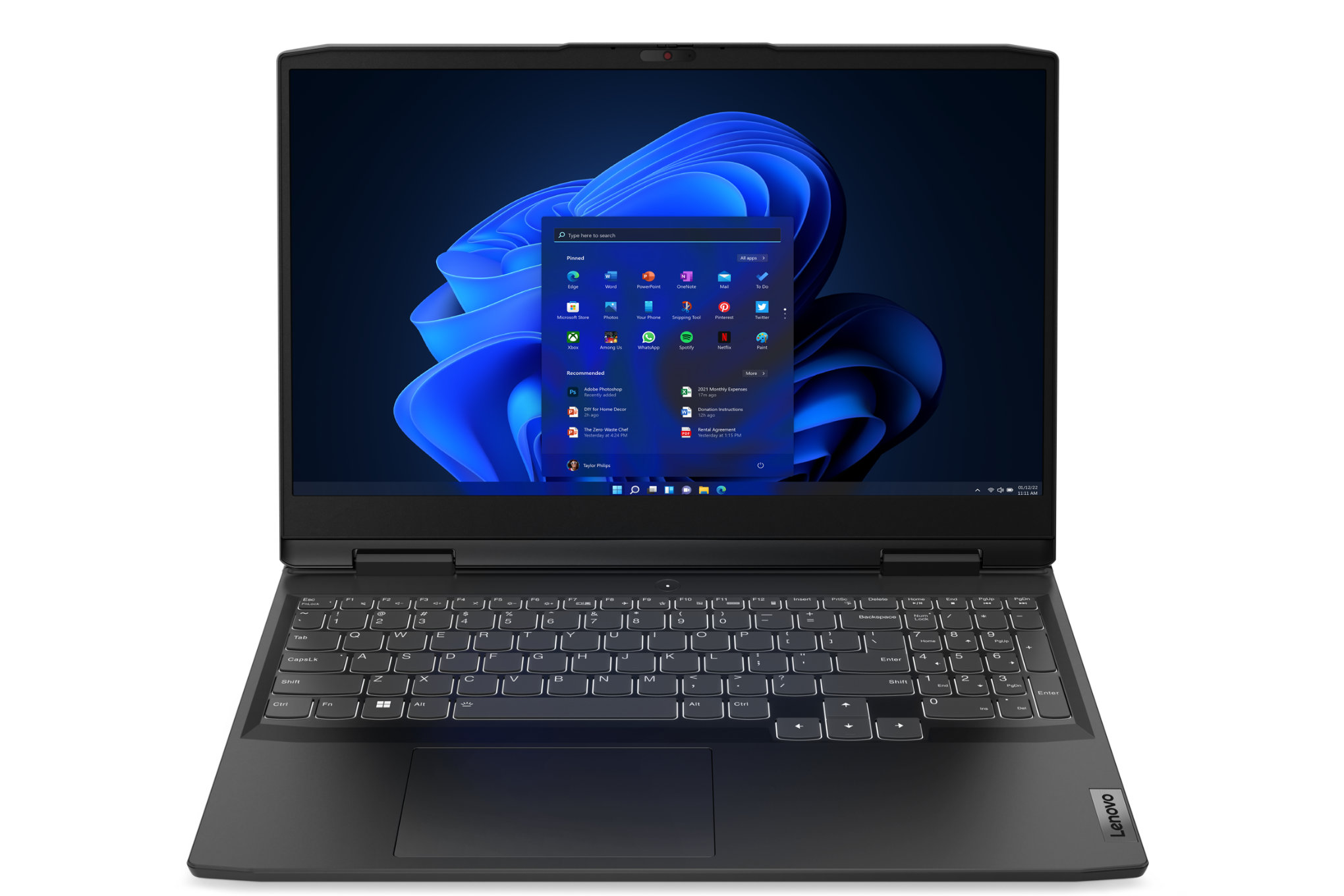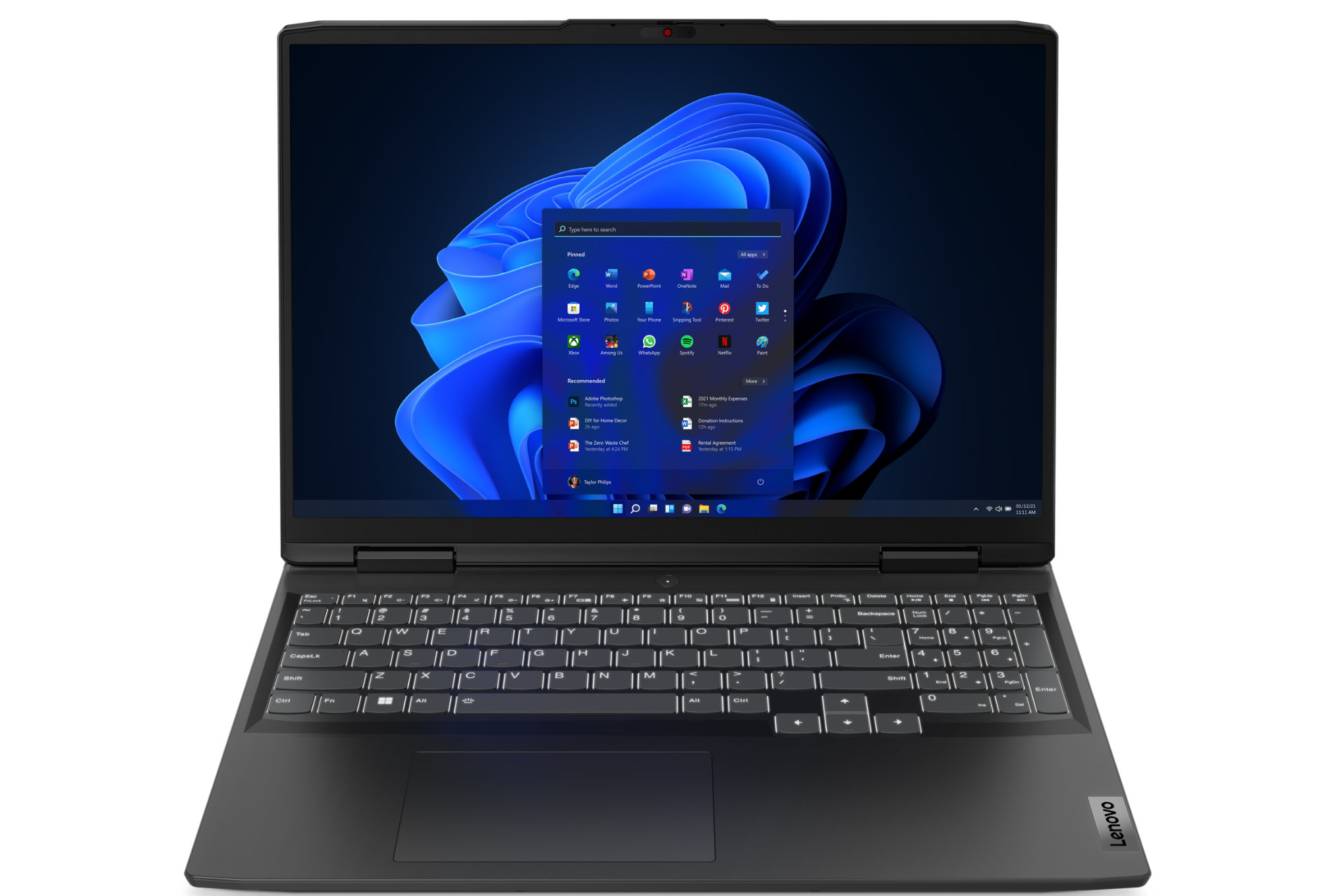Lenovo has made some hefty updates to its mid-range IdeaPad Gaming 3 lineup for 2022, which includes two Intel 12th Gen- and two AMD Ryzen 6000-series-equipped models, each with a 15.6-inch and 16-inch option. Notably, the 16-inch option for either CPU you opt for has a 16:10 aspect ratio display with the option to go up to 2560 x 1600, like the Legion 5 Pro, which is more desirable because it offers more vertical space for browsing, gaming, or anything else you want to do on a PC. The only thing they’re not particularly great for is watching movies or TV shows, which are traditionally presented in 16:9 aspect ratio.
Despite each of these IdeaPad Gaming 3 laptops looking the same across CPU options, the specs differ in some ways internally. Starting with the Intel-based options, which are known as IdeaPad Gaming 3i, each supports up to Intel’s Core i7-12700H processor and up to Nvidia’s RTX 3060 (105W total graphics power) or Intel’s new Arc discrete graphics.
As for memory, this model supports up to 32GB of DDR4 3,200MHz RAM and up to 1TB of PCIe NVMe M.2 storage. It supports Thunderbolt 4 in all configurations, except for the RTX 3060-equipped one, strangely. You can get the QHD (2560 x 1440) resolution display with either size of the 3i, the smaller of which goes up to 350 nits of brightness, while the 16-inch screen can apparently go up to 500 nits.
:no_upscale()/cdn.vox-cdn.com/uploads/chorus_asset/file/23267905/ideapadgaming3white.jpg)
For the AMD-based laptops, these can be configured with up to the Ryzen 7 6800H processor, along with Nvidia’s RTX 3050 Ti (85W total graphics power). So, the graphics are getting a bit less attention here. The storage situation is the same, though you can get up to 32GB of faster DDR5 4,800MHz RAM in this one. As you might have expected, its USB-C port doesn’t support Thunderbolt 4. Shifting to displays, the 15.6-inch version supports up to FHD, while the 16-inch model can support WQHD with the same display specs as I mentioned above.
Those differences aside, the 15.6-inch IdeaPad Gaming 3 and 3i share identical dimensions (21.8mm-thick, weighing about 5.2 pounds). The 16-inch models are a touch thinner at 20.9mm-thick and weigh about 5.5 pounds. The 15.6-inch models will be available in a grey or white colorway, while the 16-inch option is just in grey. Base models of the 15.6-inch model include a 45Wh three-cell battery, with the option to step up to a 60Wh four-cell battery if you get more power-hungry graphics. The 16-inch model goes up to a 71Wh four-cell battery.
:no_upscale()/cdn.vox-cdn.com/uploads/chorus_asset/file/23267900/ideapadgaming3rear.jpg)
With these specs in mind, any configuration that appeals to you seems like a big step up from the 2020 model that I reviewed. Even compared to newer 2021 models, the newer model sports more subtle branding, a refined design, more processor options, better graphics, and better displays. A bigger, taller display is a spec that I’m happy to see trickle down from Lenovo’s pricier Legion 5 Pro series. But it all leads to slightly higher pricing.
The 15.6-inch IdeaPad Gaming 3i with Intel starts at $989.99 and will launch in April. The starting price for the 16-inch model is set at $1,489.99, and Lenovo expects it to launch in June. As for the AMD-based models, the 15.6-inch model starts at $929 and is expected to launch in May, while the 16-inch IdeaPad Gaming 3 will launch in June starting at just $1,139.99.
Credit: Source link





